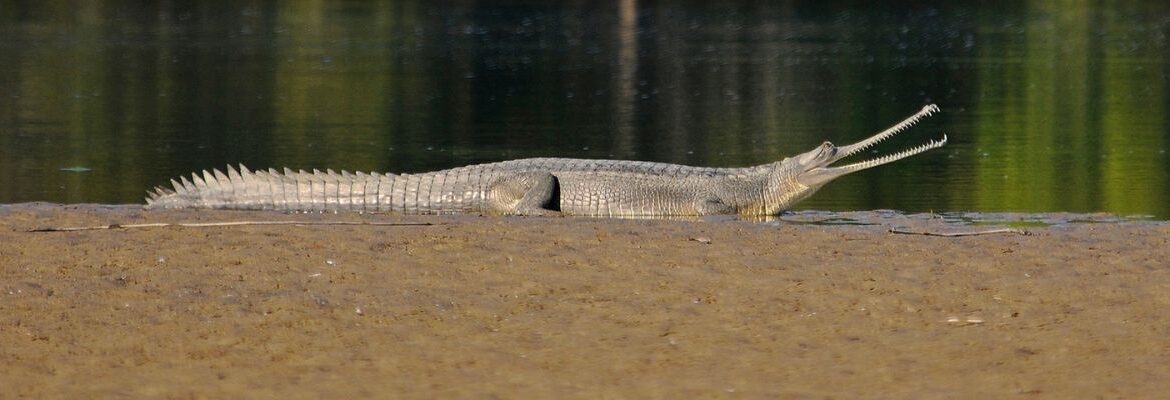The gharial now occupies only a small part of its historic range, and remaining populations are fragmented and face threats from river regulation, fishing, sand-mining, and land-use/land-cover changes among other human activities. The species is listed as Critically Endangered (IUCN 2019), and considered to be Evolutionarily Distinct and Globally Endangered (EDGE, ZSL 2007). A number of extant and emerging threats in the form of river regulation (dams, barrages, lift irrigation projects, river linking), flow modifications (non-maintenance of dry-season ecological flows, unseasonal dam discharge), sand-mining, dynamite and gill-net fishing, and land-use/land-cover changes (agricultural expansion, ravine flattening, linear intrusions, etc.) threaten to severely limit the conservation potential of the Chambal River and the long-term prospects for the gharial and other dependent species.
The gharial is conservation dependent, and the long-term survival and persistence of populations requires site-specific interventions.
To secure gharial populations and riverscapes, WCT is (a) assessing the viability of extant gharial populations and habitats, (b) developing effective population monitoring tools; (c) evaluating current management practices, (d) estimating ecological flow requirements in regulated rivers, (e) building capacity of frontline protection personnel, and (f) engaging local communities through communication, education and awareness outreach.
In short, WCT is building a conservation roadmap for gharial conservation under its Programme Makara with an emphasis on Chambal River, and Son, Ghaghra, and Gandak Rivers.
Header photo credit: Dr. Anish Andheria
Your donations support our on-ground operations, helping us meet our conservation goals.
Related Links
- Ecological Connectivity in the Age of Economic Corridors
- Capacity Building Workshop for Veterinarians on Management of Freshwater Animals in Distress was held at Jaipur
- River Animals and River People: For a Shared Future
- WCT Newsroom
- IUCN’s latest Red List Assessment of the Ganges river dolphin
- Creating a sustainable home for the cheetahs

